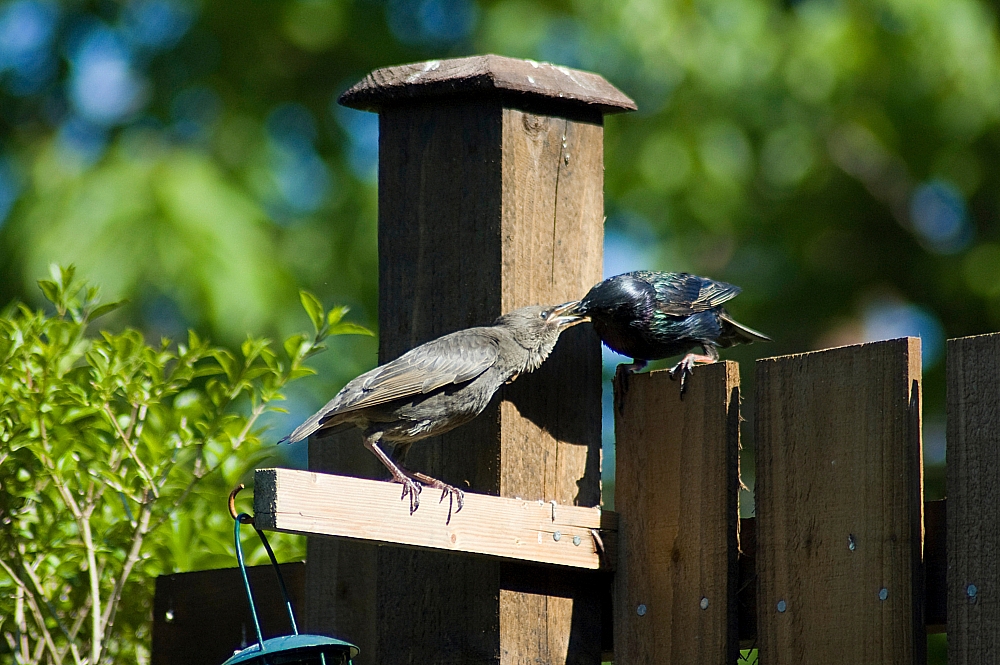Observing the early phases of the Moon from my obsy is a bit of a lottery - due to the restricted western view the only way to get the scope pointing at the thin waxing crescent is when the Moon's high in the sky. At this time of the year, that means observing during the daylight a few hours before sunset, which in turn means that the seeing is always going to be a limiting factor.
Never let it be said that I'm one to shy away from a challenge - here are some images gleaned from webcam data grabbed at about 20:00...
(mouseover the pics for the annotated versions):

Neander (30 miles dia.), Rheita E (40 x 19 miles), Furnerius (76 miles dia.),
Rheita (42 miles dia.), Fraunhofer (35 miles dia.), Metius (53 miles dia.),
Brenner A (19 miles dia.), Young D (27 miles dia.), Fabricius (47 miles dia.),
Vallis Rheita (303 x 18 miles)
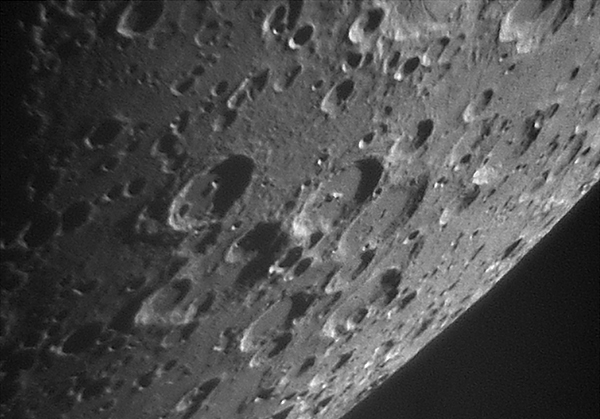
Pitiscus (50 miles dia.), Vlacq (54 miles dia.), Hommel (76 miles dia.),
Rosenberger (58 miles dia.), Nearch (46 miles dia.)

Daniell (18 x 14 miles), Rima G Bond (91 x 2 miles), G Bond (19 miles dia.),
Luther (6 miles dia.), Posidonius (58 miles dia.), Chacornac (31 miles dia.)

Endymion (76 miles dia.), Keldysh (20 miles dia.), Hercules (42 miles dia.),
Atlas (53 miles dia.)
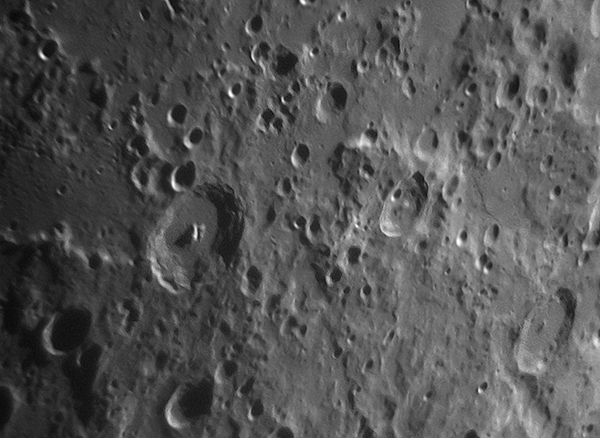
Piccolomini (53 miles dia.), Neander (30 miles dia.), Rothman (25 miles dia.),
Rheita (42 miles dia.), Stiborius (27 miles dia.)
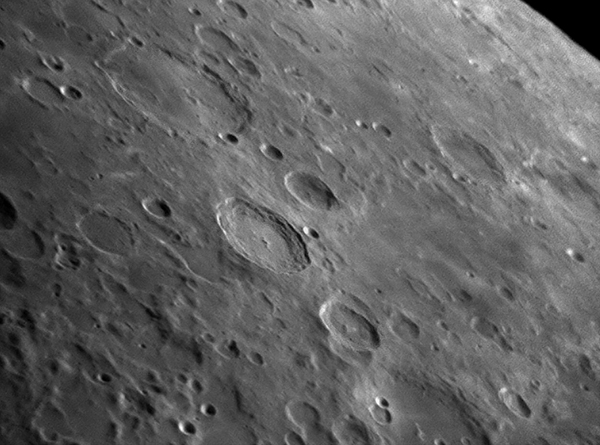
Messala (75 miles dia.), Berosus (45 miles dia.), Bernoulli (29 miles dia.),
Geminus (52 miles dia.), Burckhardt (35 miles dia.), Cleomedes (76 miles dia.)
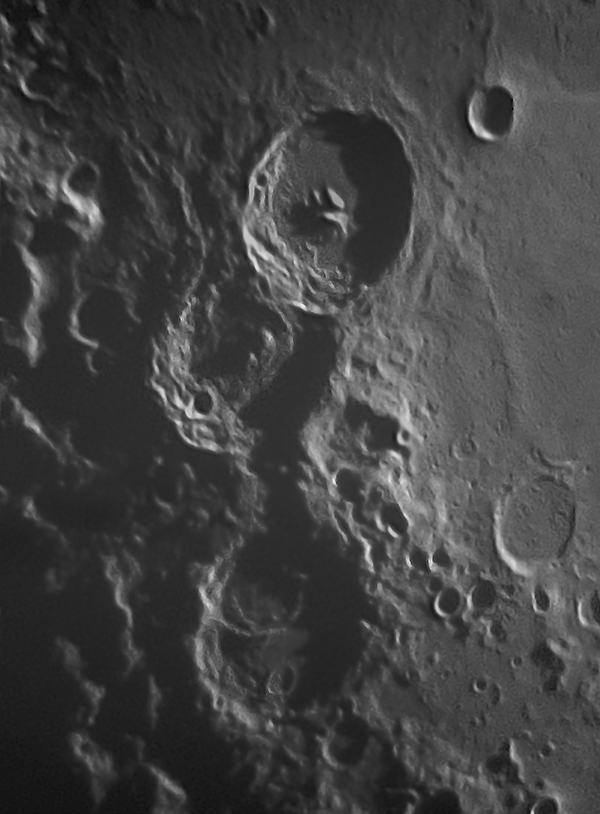
Madler (17 miles dia.), Theophilus (61 miles dia.), Cyrillus (59 miles dia.),
Beaumont (32 miles dia.), Catharina (61 miles dia.)






